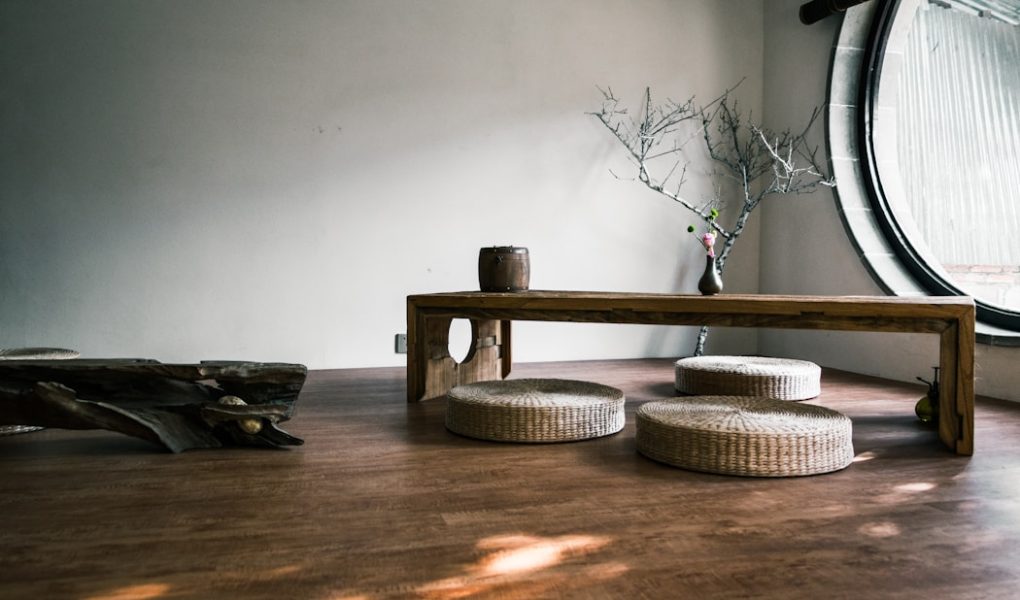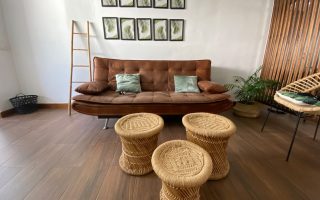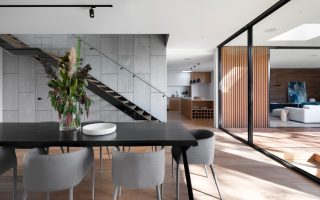Open-plan spaces are becoming increasingly popular in modern homes. They offer a sense of openness and flexibility, making them ideal for families and social gatherings. However, choosing the right flooring for an open-plan space can be challenging. The flooring needs to be durable, easy to maintain, and visually appealing. In this article, we will explore the best flooring options for open-plan spaces and provide some helpful tips to make your decision easier.
Why Flooring Matters in Open-Plan Spaces
Flooring plays a crucial role in open-plan spaces. It can define different areas, enhance the overall aesthetic, and even impact the acoustics of the room. According to Sarah Barnard, Interior Designer and Founder of “The Design Studio,” “Open-plan spaces benefit from flooring that can seamlessly transition between different zones. Consider using contrasting materials, textures, or patterns to visually define areas without creating physical barriers.”
The Importance of Acoustics
One of the challenges of open-plan spaces is managing noise levels. Dr. David Johnson, Acoustical Engineer and Professor at “University of Sound Design,” emphasizes, “The acoustics of an open-plan space are paramount. Choose flooring materials that absorb sound and minimize reverberation, enhancing the functionality and comfort of the space.” A study by the National Institute for Occupational Safety and Health (NIOSH) titled “The Impact of Flooring Materials on Perceived Noise Levels in Open-Plan Offices” supports this, highlighting the importance of sound-absorbing materials in reducing noise levels.
Best Flooring Options for Open-Plan Spaces
1. Luxury Vinyl Tile (LVT)
Luxury Vinyl Tile (LVT) is a popular choice for open-plan spaces. It is durable, easy to maintain, and comes in a variety of styles and colors. Mark Henderson, Architect and Lead Designer at “Urban Design Solutions,” notes, “Durability and low maintenance are crucial for open-plan spaces that experience high traffic. Flooring materials like LVT or engineered hardwood offer both resilience and aesthetic appeal.”
2. Engineered Hardwood
Engineered hardwood is another excellent option for open-plan spaces. It provides the beauty of natural wood with added durability. Engineered hardwood is less prone to warping and can handle changes in temperature and humidity better than solid wood. Plus, it can be refinished if it gets scratched or worn.
3. Laminate Flooring
Laminate flooring is a cost-effective alternative to hardwood. It is easy to install and maintain, making it a practical choice for busy households. Laminate flooring also comes in a wide range of styles, allowing you to achieve the look of wood, stone, or tile without the high cost.
4. Ceramic or Porcelain Tile
Ceramic or porcelain tile is a durable and versatile option for open-plan spaces. It is resistant to moisture, stains, and scratches, making it ideal for high-traffic areas. Tile also comes in various sizes, colors, and patterns, allowing you to create a unique and stylish look.
5. Carpet Tiles
Carpet tiles are a great option for adding warmth and comfort to an open-plan space. They are easy to install and replace, making them a practical choice for families with children or pets. Carpet tiles also help to absorb sound, improving the acoustics of the room.
Tips for Choosing the Right Flooring
1. Consider the Function of Each Area
When choosing flooring for an open-plan space, consider the function of each area. For example, the kitchen and dining areas may require more durable and moisture-resistant flooring, while the living area may benefit from softer, more comfortable flooring.
2. Use Contrasting Materials
Using contrasting materials can help to define different areas within an open-plan space. For example, you could use tile in the kitchen and dining areas and hardwood or carpet in the living area. This creates a visual distinction between the different zones without the need for physical barriers.
3. Think About Color and Pattern
Color and pattern can have a significant impact on the overall look and feel of an open-plan space. Lisa Miller, Interior Designer and Author of “The Color Connection,” advises, “Don’t underestimate the impact of color and pattern in an open-plan space. Flooring can be used to create a cohesive and inviting atmosphere while highlighting specific areas.”
4. Prioritize Durability and Maintenance
Open-plan spaces often experience high traffic, so it is essential to choose flooring that is durable and easy to maintain. Materials like LVT, engineered hardwood, and tile are all excellent options for high-traffic areas.
5. Consider Acoustics
As mentioned earlier, acoustics are crucial in open-plan spaces. Choose flooring materials that help to absorb sound and minimize noise levels. Carpet tiles and certain types of underlayment can help to improve the acoustics of the room.
Personal Anecdotes
When we renovated our home, we decided to go with an open-plan layout. We chose engineered hardwood for the living and dining areas and tile for the kitchen. The transition between the two materials helped to define the different zones, and the hardwood added warmth and elegance to the space. We also added a few carpet tiles in the play area for our kids, which helped to reduce noise and provided a soft surface for them to play on.
Another friend of mine opted for LVT throughout their open-plan space. They loved the durability and low maintenance of the material, especially with their two dogs running around. The LVT also provided a seamless look, making the space feel even more open and cohesive.
Conclusion
Choosing the right flooring for an open-plan space is essential for creating a functional and visually appealing environment. Consider the function of each area, use contrasting materials to define zones, and think about color and pattern to create a cohesive look. Prioritize durability and maintenance, and don’t forget about acoustics. By following these tips and considering the best flooring options, you can create a beautiful and practical open-plan space that meets your needs.
References
- Barnard, S. (n.d.). Open-plan spaces benefit from flooring that can seamlessly transition between different zones. The Design Studio.
- Johnson, D. (n.d.). The acoustics of an open-plan space are paramount. University of Sound Design.
- Henderson, M. (n.d.). Durability and low maintenance are crucial for open-plan spaces that experience high traffic. Urban Design Solutions.
- Miller, L. (n.d.). Don’t underestimate the impact of color and pattern in an open-plan space. The Color Connection.
- National Institute for Occupational Safety and Health (NIOSH). (n.d.). The Impact of Flooring Materials on Perceived Noise Levels in Open-Plan Offices.
- Journal of Interior Design and Architecture. (n.d.). The Role of Flooring in Defining and Enhancing Space in Open-Plan Homes.




